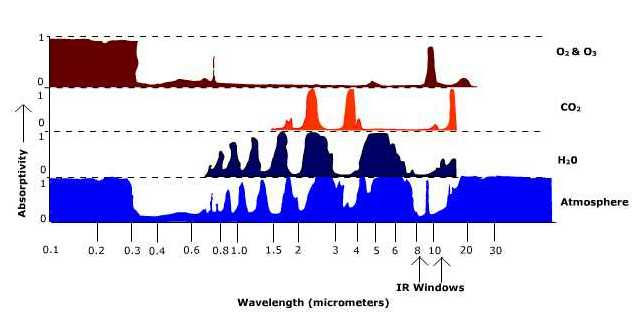Selective Absorption by the AtmosphereThe gasses that comprise our atmosphere are selective
absorbers
of radiation because each gas absorbs only particular wavelengths of
light. Selective absorption by particular gasses and the atmosphere as
a whole is shown in Figure 4.5b. The graph shows very little absorption
for the atmosphere as a whole in the shortwave end of the spectrum,
especially in the visible light band (the band of maximum emission for
the Sun). The atmosphere absorbs far better in the longwave end of the
electromagnetic spectrum which is the region of maximum emission (10Ám)
for the Earth.
Figure 4.5 Absorption of the atmosphere and selected gasses.
The IR windows are found at about 8 - 14 Ám. It is through this portion of the electromagnetic spectrum that infrared radiation is transferred through the atmosphere and into outer space. These windows can be "closed" by clouds which absorb infrared radiation.
|

